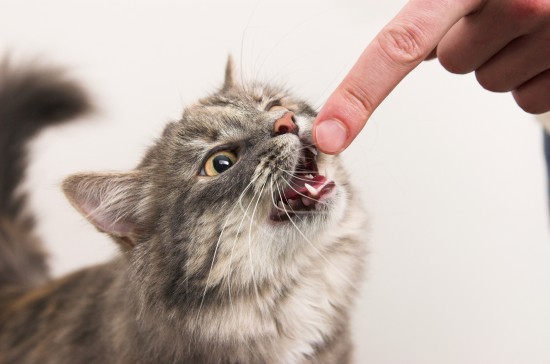
Spaniels have always been the traditional hunting or retriever dogs.
Getting ready for a new spaniel begins before you bring it home.
Choosing which breed of spaniel is sometime difficult as their are many traits in the spaniel family to look at.
All dogs belong to the same species, called the Canis familiaris. All dogs come equipped with the remarkable blend of high intelligence, fierce loyalty, human-like emotions, boundless love, and the ability to smell leftover meat two blocks away.
Here are a few common traits for different spaniel breeds:
American Cocker Spaniel average height is 13.5-15.5in average weight is 26-34lb bred for Small game retrieving Now mainly used as Companion dog and family pet.
Sussex Spaniel average height is 13-15in average weight is 35-45lb bred for Game Tracking Now mainly used as Companion or family pet.
Welsh Springer Spaniel average height is 17-19in average weight is 35-45lb bred for Game Flushing and Retrieving Now mainly used as Companion, or gundog.
Field Spaniel average height is 16-19in average weight is 35-50lb bred for Game retrieving Now mainly used as Companion or hunter.
Cavalier King Charles Spaniel average height is 12-13in average weight is 13-18lb bred for Companion Now mainly used as Companion for retired hunters.
Choosing the trait you would like in your spaniel pup should be foremost in your mind. You don't want to end up with a lap dog when you really wanted a hunting companion.
A puppy means a big change in your life and it helps, as the Boy Scouts say, to be prepared. Taking time now to plan and get things in order will make a big difference in the long run.
Here are a few Tips
While at the breeder's kennel go through the following steps
1. Hold each puppy up so that its feet are a few inches off the floor. Watch what he does: Most pups wiggle around a bit then accept it. This mean he may not like it but will accept your authority. A dominant puppy will continue struggling and may howl and bite. A submissive puppy will just dangle passively and accept the situation or in severe cases, panic and submissively urinate.
2. Lay the new pup on its back. Comfort it by stroking its belly and talking to it softly. Observe its reaction: A normal puppy will struggle briefly, then settle. This is the response that most buyers should look for. A dominant puppy will struggle constantly, howl, and perhaps try to bite. A submissive puppy will succumb and perhaps urinate or, in an extreme case, panic.
3. Set the puppy on its feet on the floor. Then a crumpled piece of paper or a small stick away from the puppy and observe its reaction: A normal puppy will chase the object, play with it, and perhaps bring it back to you if you call out to it. It will allow you to take the object away without much fuss. A dominant puppy will chase the object, take it to a corner, and ignore you when you call out to it. It may growl at you if you attempt to reclaim the object. A submissive puppy may not react at all to the object or may actually be afraid of it.
4. Crouch down a few feet from the puppy and encourage it to come to you by clapping and calling out. Observe its reaction: A normal puppy will happily come over to you in a confident, playful manner. A dominant puppy will either charge you and jump up on you recklessly or completely ignore you. A submissive puppy may come over cautiously and expose its belly, perhaps even urinating upon being touched.
Let us consider extremely submissive behavior to be far left of center, normal to be at the center, and extremely dominant to be far right of center. Most buyers who are looking for a loving, trainable family pet should consider a puppy that performs as close to the center as possible.
When dealing with a dominant breed such as the Rottweiler, Mastiff, or German Shepherd, you would do well to consider a puppy that is slightly left of center. When dealing with a submissive breed such as the Pomeranian, Beagle, or Yorkie Terrier, you might wish to consider a puppy that is slightly right of center. In all cases, avoid the extremes.
Start out with the right attitude. The first weeks of your new puppy's life with you will be busy and demanding. There may be times when you wonder if getting a puppy was such a good idea. Things will go better if you have patience and keep your sense of humor. Remember that puppyhood only happens once. The extra effort you put into it now will pay off in the future.
A note on discipline:
Physical discipline should be reserved for serious dog crimes only, and not to be used for every episode of bad behavior. Verbal correction will suffice for many dogs, but you should know more than one method of discipline before the unfortunate necessity of using one arises.
For an extreme situation the best and I feel the only method of physical punishment is the shake down.
The shakedown is simply grabbing with one hand the scruff of the neck and giving it a good shake. This method approximates the technique a mother of a litter uses to keep order in the litter, to stop fighting between litter members, or to help wean her pups away from her to solid food. Discipline methods that reflect instinctual canine behavior will communicate displeasure in ways a dog can understand. Other corrections like throwing or hitting the dog with objects, spanking with newspapers, or simple pleading only serve human, not canine, ends, and do not communicate displeasure clearly to the dog.
 Preparing Your House for a New Pet
Preparing Your House for a New Pet
Adopting ac
Preparing Your House for a New Pet
Preparing Your House for a New Pet
Adopting ac
 Five Of The Most Common Health Problems In Rabbits
Five Of The Most
Five Of The Most Common Health Problems In Rabbits
Five Of The Most
 Crate Training Your Dog Or Puppy
Crate Training Yo
Crate Training Your Dog Or Puppy
Crate Training Yo
 How To Stop Your Cat From Scratching Or Biting In Play
How To Stop Your
How To Stop Your Cat From Scratching Or Biting In Play
How To Stop Your
 Choosing And Caring For A Fire Belly Toad
Choosing And Cari
Choosing And Caring For A Fire Belly Toad
Choosing And Cari
Copyright © 2005-2016 Pet Information All Rights Reserved
Contact us: www162date@outlook.com